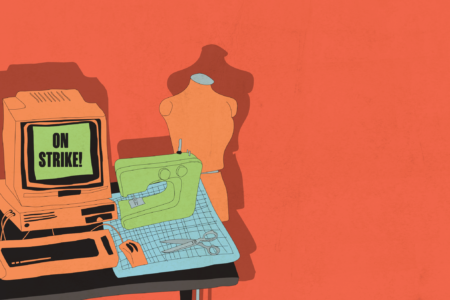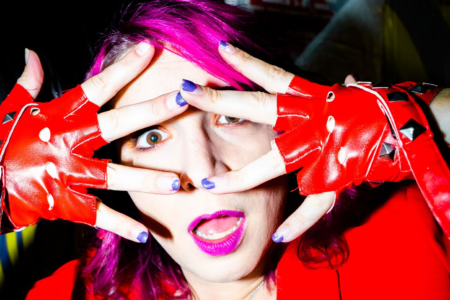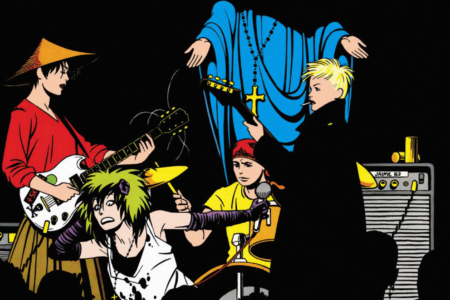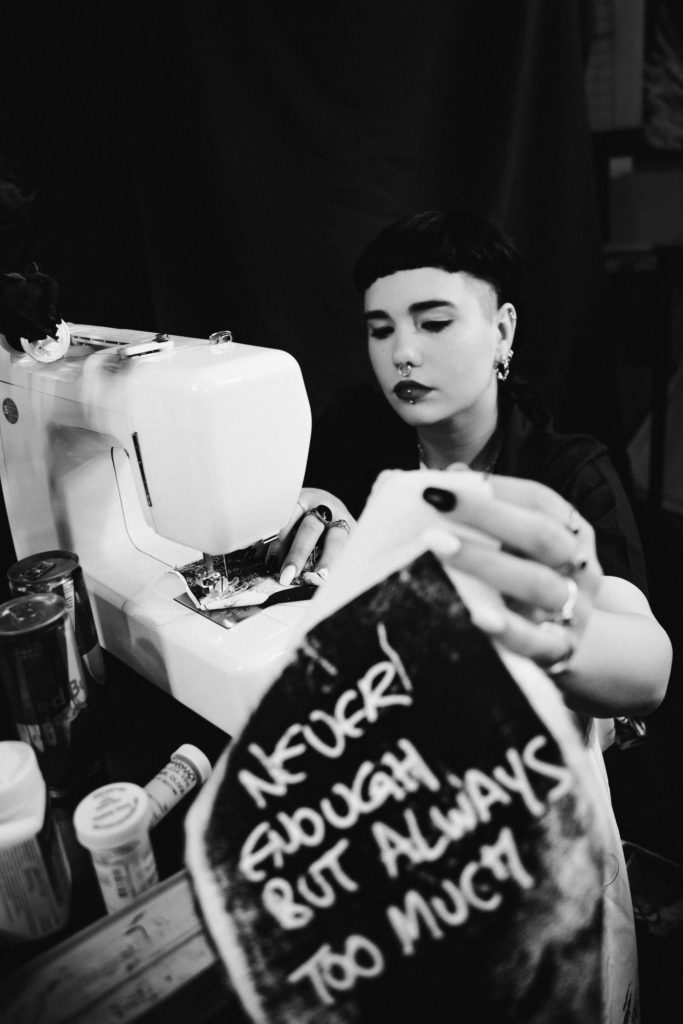
Folio asks artists and curators to gather works made with unexpected materials and adapt them for the printed page. In this issue we speak with Olivia Mae Sinclair, a textile artist binding books and zines with frayed fabrics, exploring a textured meaning of the text within.
When I was about 11, I made my mom buy me a copy of Michael Ende’s The Neverending Story from a used online bookstore. I had seen the movie about a million times and wanted to see what the book was all about. Would I somehow become the little boy Bastian and lose myself in a mystical world where my horse is too sad to go on?
It arrived a day before my family was going to the beach. It was nothing remarkable, smooth off-white pages, stained on the edges. The next day, I sat on the hot sand, reading intensely. The text bounces between red and green to signify the real world and “Fantastica.” When I pick up the old book, it smells like the beach. I don’t remember rubbing sunscreen and sand into this thing, but it sends me back to that day. So conceptually, the books we interact with and encounter retain us, which is (sometimes) more exciting than any binding or cover.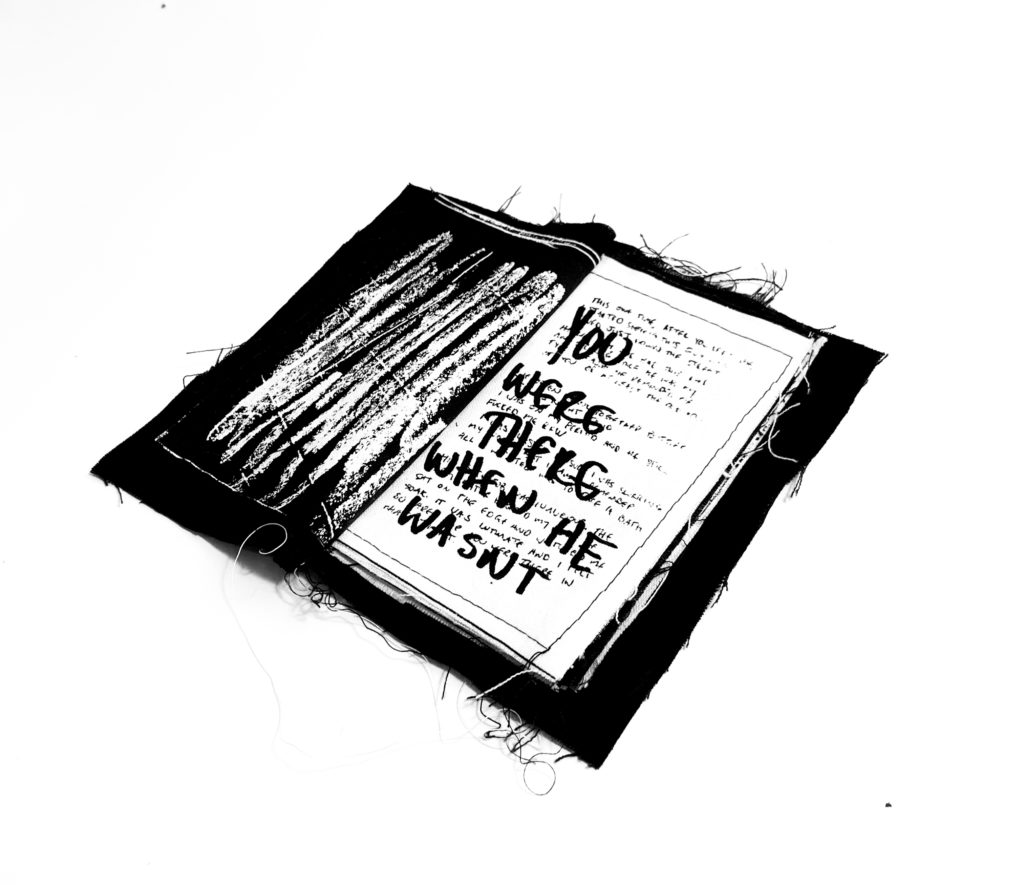
When I was doing my BA at Sheridan, the instructors always told me to make my textile work neater, crisper and to finish things better. For a printing project in my third year I decided to lean into being messy and sloppy, as a way of resistance and self-acceptance. I purposely cut all my fabric roughly, left big globs of ink, and left the threads incredibly long. The feedback I got on that project was glowing, and I got a ton of praise for my extra-long threads.
I am thankful that the instructors pushed me to work better, but I found my own way. My books act as a cosmic mirror for me. They reflect my innermost thoughts and feelings but can rarely be kept neat and tidy in their little book-bodies. Instead, they spill out of themselves. My work primarily looks at mental health issues, trauma and gender-based violence. I think having the work on cloth is a nice juxtaposition and plays with tension. I think it’s comforting to hold onto something soft while reading about complex issues. I started making textile books because of my formal textile training, but I grew into the inherent intimacy of fabric with my fabric zines.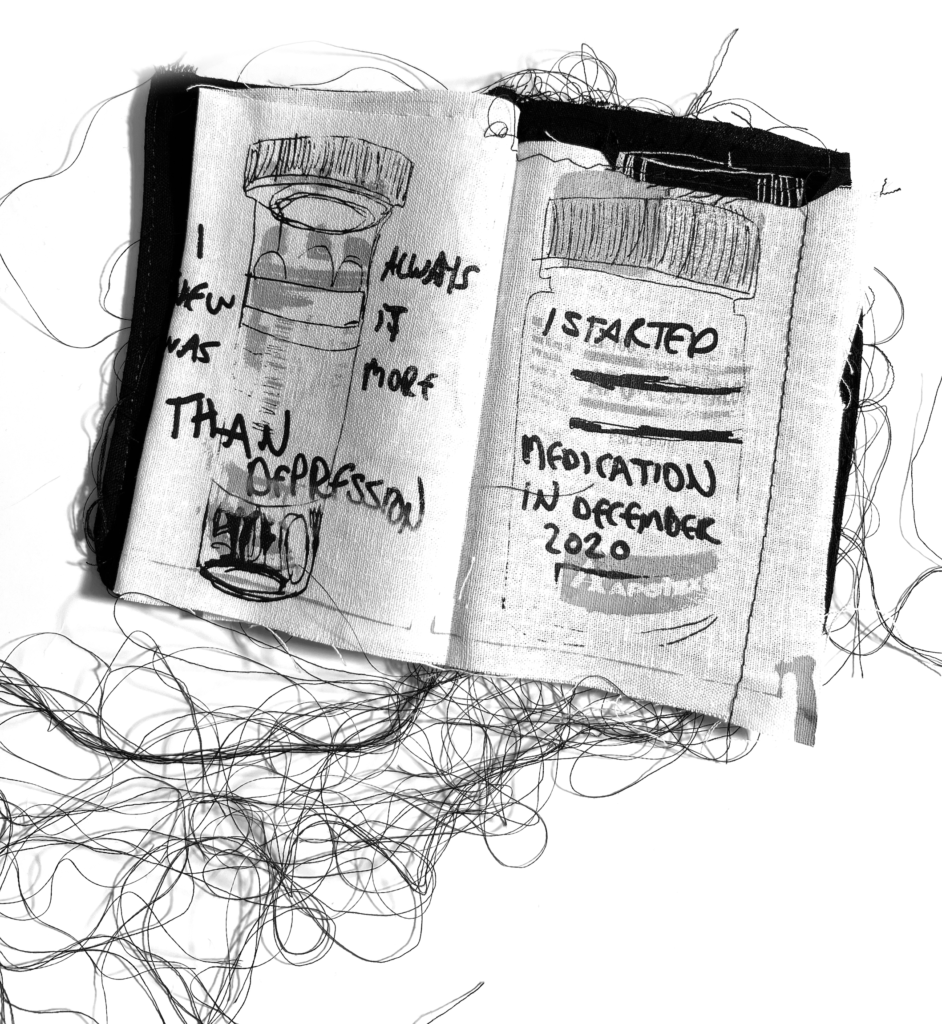
I have recently started making screen prints on paper, and it’s been nice to take a marker or paintbrush and make a quick mark if I need to. When I screenprint on fabric, it’s challenging to go back and add something once my screens have been exposed. I’ve been working on my artist books since 2018, so I have it down to a pretty exact science — but I am always trying to push outside myself and do new things.

